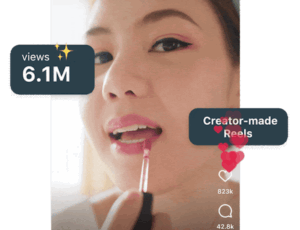 “The Sell Sider” is a column written by the sell side of the digital media community.
“The Sell Sider” is a column written by the sell side of the digital media community.
Today’s column is written by Todd Anderman, president of sales, marketing and operations at Thrillist.
Everyone talks about branded content nowadays, such as custom, sponsored, native and native programmatic (talk about an oxymoron). The IAB even defined one of its six categories of native advertising as “custom/can’t be contained.” Love that.
Branded content, however, is more than a buzzword. It’s a mutually beneficial marriage of an advertiser’s goals with a publisher’s, and the methods of producing it are getting more advanced every day.
Using sponsored content as a means to build awareness has been done forever, spanning mediums from soap operas on back to radio shows. Those mass audiences had a base-level association with the sponsor, an approach that certainly represents a practical and proven use case. But as with all media, there comes a time when marketers begin to question its effectiveness in driving down-funnel response, and a desire arises to build a deeper engagement with publishers’ audiences.
So while it was only natural that the first wave of branded content on the web reached back to the awareness roots that worked so well in previous mediums, it also made sense that over time the conversation around digital native content would evolve and marketers would begin to look for deeper meaning.
Digital branded content is no longer just about awareness, although that remains a strong suit. The definition of branded content has broadened, while the relationship between content and advertisers’ goals has tightened. This has necessitated a shift from pure art to an approach that incorporates art and science.
The ‘Art’ Side Of The Equation
First, there’s the art half of this equation. More so than ever, content can be anything – information, entertainment, education, a whole world of experiences, you name it. What binds all of these content forms together is that in order for any of them to “work,” they must be authentic. The publisher needs to mean it and the audience needs to believe it. If those two things happen, we build what every brand marketer wants: trust with an audience.
That trusted relationship can drive real action, especially when the publisher’s core purpose is to move its audience to do something. For a tech site, for example, that might mean product comparisons that drive informed purchase decisions, whereas an entertainment site may want to create an emotional trigger, get someone to go see a movie or tune-in to a TV show. Content can be created for all levels of the marketing funnel, but how it’s actualized depends upon the publisher’s voice, its readers’ expectations and the advertiser’s goals. The magic happens when they all fit together.
Awareness is created first and foremost at the top of the funnel. As we move down the funnel, content can and should create interest, consideration, intent, evaluation or even a purchase.
The Science
What kind of branded content works best in driving consideration? Intent? Evaluation? Looking back at completed programs, which actually drove action? That’s where the science comes in.
Was each campaign developed with specific KPIs for each part of the marketing funnel? There must be a clear marketing goal for each campaign. The goal should be set upfront and measured throughout, using first-party or third-party research, or both. If that goal is purchase intent, the content approach will be very different than if the goal is message association.
Then there’s content volume. Best practices start with a theme that has multiple pieces of content, each regularly measured in order to optimize the live campaign to the KPIs. Sometimes a publisher creates content meant to drive intent that actually drives message association, or content devised as action-oriented that proves better suited for driving improved awareness. With countless permutations, you simply can’t optimize without the flexibility to react to performance numbers. Analytical tools to understand which pieces are resonating with an audience and driving advertiser KPIs become increasingly critical to the process.
Branded content has definitely gone well beyond its awareness roots. Its success is now rooted in the alignment of art and science. When it comes down to it, knowing a program succeeded is a far better feeling than simply believing it did.
Follow Thrillist (@Thrillist) and AdExchanger (@adexchanger) on Twitter.












